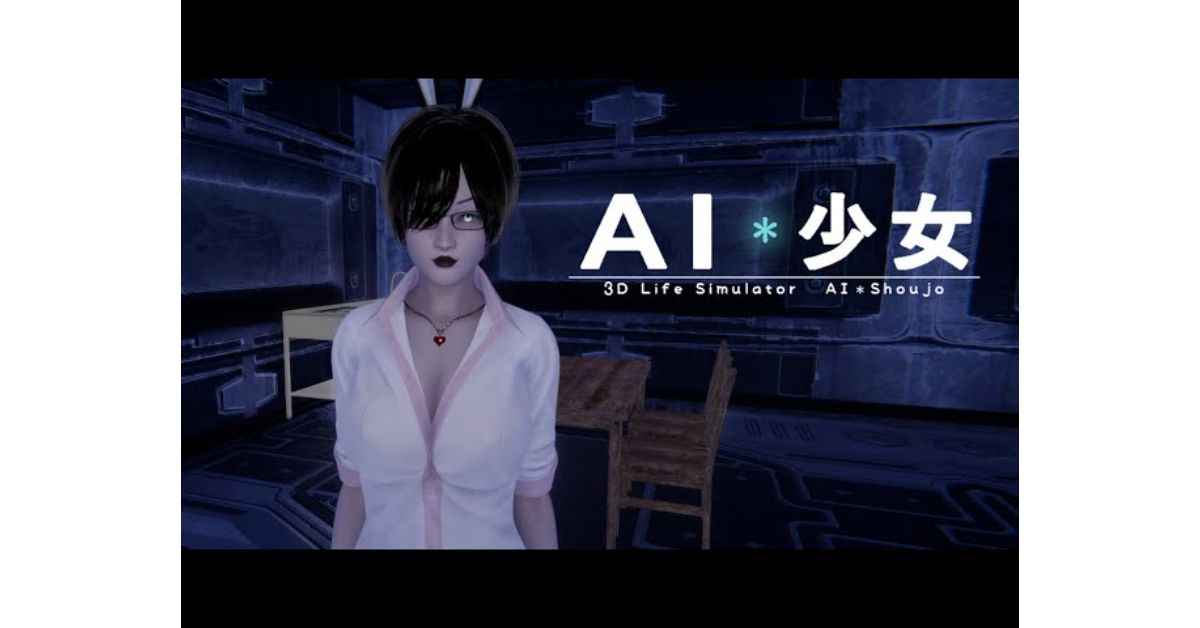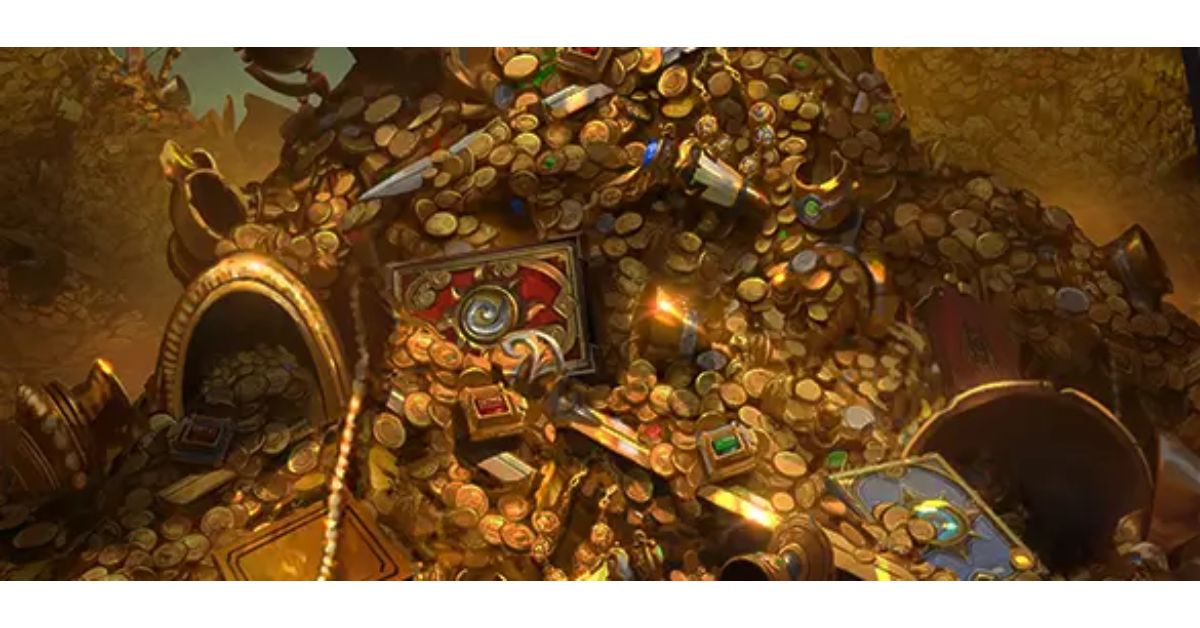Invite to the world of 3D game environment style! In the ever-evolving landscape of computer game growth, the value of efficient atmosphere artists can not be overstated. They are the engineers behind the exciting virtual worlds that transfer gamers to sensational and credible settings. But what exactly does it take to come to be a 3D atmosphere musician? What stages are involved in crafting these complex digital worlds? And which software application and tools do market professionals employ? In this comprehensive guide, we will look into the depths of 3D game environment style, clarifying everything you require to know. So, if you aspire to learn more, grab your notepad and prepare to start this journey!
Table of Contents
Crafting Immersive Worlds: Exploring 3D Game Environments
At https://room8studio.com/services/3d-environment/ , you’ll uncover an exciting showcase of 3D video game atmospheres that redefine the borders of video gaming experiences. Room 8 Workshop’s commitment to pushing the limits of style and technology shines with their impressive profile of 3D video game environments. Dive into a globe where development meets artistry, and discover exactly how their competence in creating immersive digital landscapes establishes them apart in the gaming market.
Understanding 3D Game Environment Design
In the world of modern computer game advancement, 3D setting design stands as a critical component. It makes up the procedure of fashioning immersive digital landscapes that gamers can explore and involve with. This can incorporate a variety of settings, from natural landscapes and dynamic urban cityscapes to advanced spaceships and sensational realms. Essentially, it is the art of building digital worlds that possess a realism and immersive quality capable of delivering gamers to totally different dimensions.
As video games continue to development, the need for skilled 3D atmosphere musicians gets on a stable climb. With assumptions of stunning graphics and immersive setups becoming the norm, game developers have to guarantee that their digital worlds are not just aesthetically enticing however also unbelievably persuading. In this quest for realism and immersion, 3D game environment design takes spotlight, making it a crucial aspect of contemporary game advancement.
The Role of a 3D Environment Artist
A 3D environment musician is an innovative specialist entrusted with the layout, production, and implementation of electronic landscapes in various forms of enjoyment media, including video games and movies. These competent people breathe life into electronic worlds by thoroughly crafting 3D designs of buildings, surface, items, and various other ecological elements that players will engage with throughout the video game.
They usually team up within a larger group of artists, including concept artists and personality musicians, all working in harmony to craft an unified visual experience. 3D setting musicians have to have a deep understanding of numerous modeling and texturing strategies, together with an understanding of lights and its impact on a scene. They have to likewise effectively browse within the constraints of the video game engine, striking an equilibrium in between aesthetic integrity and efficiency.
Beyond technical abilities, an effective 3D setting artist need to also have a rich feeling of creativity and creative imagination. They are the dreamers responsible for conceiving and bringing the video game globe to life. This role demands a steadfast interest to information and efficient cooperation with other members of the advancement team.
Defining the Characteristics of 3D Environments
The characteristics of a 3D environment include the special high qualities and elements that specify the virtual rooms developed with three-dimensional graphics and innovation. These characteristics contribute in enhancing the realism, interactivity, and immersive nature of 3D atmospheres. Right here are some essential attributes:
- Deepness and Measurement: Unlike 2D environments, 3D atmospheres give depth and measurement, enabling things and components to have elevation, dimension, and depth, leading to a lot more realistic representation of the real life.
- Realistic look and Info: 3D settings strive to recreate real-world aspects with a high level of information, including practical frameworks, lighting influences, shadows, and physics simulations to develop a visually persuading and immersive experience.
- Interactivity and Navigating: 3D setups generally include interactive elements that enable customers to navigate and have a look at the virtual area. Gamers can relocate, involve with items, and also adjust the environment itself, giving an added fascinating and interactive experience.
- Dynamic and Altering Settings: 3D settings can be made to change dynamically, presenting features like dynamic climate problem, day-night cycles, and other environmental variations that add to a boosted sense of realism and immersion.
- Spatial Noise: Along with aesthetic parts, 3D setups regularly integrate spatial noise, replicating noises originating from various directions and distances. This includes one more layer of practical appearance, additional improving the sense of exposure within the digital globe.
- Range and Proportions: 3D atmospheres properly show variety and portions, allowing the development of large landscapes, architectural frameworks, or facility settings, supplying adequate possibilities for varied and innovative world-building.
- Assimilation of Interactive Items and Personalities: Within a 3D environment, points, characters, and various other elements can be flawlessly included and involve with one another. This permits dynamic storytelling, gameplay technicians, and sensible interactions in between virtual entities.
- These characteristics jointly contribute to the growth of immersive, visually exciting, and interactive 3D atmospheres, extending applications such as computer game, virtual reality experiences, developing visualization, and simulations.
Diverse Kinds Of 3D Video Game Environments
The globe of 3D environments encompasses a variety of types, each dealing with various objectives and serving numerous markets and applications. Right here are some typical groups:
Virtual Reality (VR) Environments
These immersive, computer-generated simulations reproduce real-world or fictional spaces, supplying a completely immersive and interactive experience when experienced via VR headsets.
Video Game Environments
Computer game employ 3D environments to develop virtual worlds for gamers to check out and engage with. These settings can range from sensible open-world settings to sensational and imaginative landscapes.
Architectural Visualization Environments
Engineers and developers utilize 3D settings to develop online representations of buildings, interiors, and city rooms, making it possible for clients and stakeholders to visualize and experience architectural layouts before building and construction.
Training and Simulation Environments
3D settings find application in training and simulation circumstances, such as military or medical training, supplying a safe and regulated room for people to exercise and learn intricate jobs or situations.
Product Visualization Environments
In item style and marketing, 3D settings are employed to display and imagine products, facilitating realistic making and discussion of products in numerous settings and illumination conditions.
Animated Film and Visual Effects Environments
3D settings play a pivotal duty in animated films and visual results production by offering electronic backgrounds and setups for characters and objects, allowing the production of aesthetically striking and reasonable scenes.
Augmented Reality (AR) Environments
AR atmospheres blend digital content with the real world, overlaying digital components onto the individual’s sight, enhancing real-world experiences with interactive and informative electronic material.
Scientific and Information Visualization Settings
Scientific research study and details visualization use 3D setups to stand for elaborate data collections, formats, or simulations, making it feasible for scientists to take a look at and evaluate information in a visually instinctive and interactive methods.
These circumstances just scratch the surface of the diverse type of 3D setups, and the applications and markets making use of 3D advancement remain to boost, generating brand-new and ingenious arrangements tailored to certain requirements.
The Process of Crafting a 3D Game Environment
Developing a 3D environment is an exact journey that encompasses many important stages, each adding to the recognition of visually fascinating and immersive electronic spaces. The process begins with concept advancement, where concepts are brainstormed, harsh ideas are laid out, and referrals are gathered to develop the desired look of the environment. This phase plays a pivotal role in specifying the aesthetic style, theme, and mood.
As quickly as the principle is reinforced, a thorough 3D design of the setting kinds, produced utilizing specialized software program such as Autodesk Maya or Blender. This design consists of components like surface, structures, and props, creating the foundational framework of the virtual area. Texturing and shielding are then related to take a breath life into the 3D design, improving the realistic look and aesthetic top quality. Lights design assumes another essential role, with calculated placement of light sources, changes in strength and shade, and the crafting of darkness including deepness and ambience to the environment.
To raise the setting’s realistic look and interactivity, dynamic results such as particle impacts and interactive aspects are seamlessly incorporated. These results instill motion, vitality, and immersion into the digital world. The final action, optimization, ensures that the atmosphere runs effortlessly and efficiently throughout numerous systems and devices. Jobs like polygon matter decrease, appearance optimization, and fine-tuning of illumination and impacts strike a harmonious equilibrium in between aesthetic excellence and efficiency.
Throughout this journey, partnership amongst artists, designers, and technological specialists shows critical in recognizing the creative vision and technical execution. By paying meticulous interest to information and merging artistic creativity with technological proficiency, thrilling and trustworthy 3D settings come to life. The procedure of designing a 3D setting functions as a captivating voyage, enabling the development of immersive and aesthetically stunning digital globes, whether for computer game, virtual reality experiences, or architectural visualizations. By adhering to a systematic technique and welcoming the repetitive nature of the design procedure, developers can craft atmospheres that leave an enduring mark on viewers.
The Evolution of 3D Game Environment Design
The development of 3D game environment layout has actually been an amazing trip, noted by advancements in modern technology and the ever-growing demand for immersive digital experiences. From its modest beginnings to the cutting-edge techniques utilized today, the field has gone through substantial changes, pushing the borders of creativity and realism.
In the very early days of 3D game environment style, restricted computational power and software program capabilities postured significant challenges. Nonetheless, pioneering musicians and designers laid the foundation wherefore would advance right into a growing field. They crafted fundamental 3D versions and atmospheres making use of standard forms and textures, commonly with restricted interactivity.
As innovation progressed, so did the opportunities of 3D game environment design. The advent of a lot more effective hardware and software fired up a revolution, allowing developers to produce progressively elaborate and thorough digital globes. The intro of real-time rendering engines and progressed modeling tools introduced a new period, using higher realism, enhanced lights effects, and enhanced texturing.
The climb of open-world video games and the demand for large, immersive settings thrust the development of 3D game environment design also better. Designers started integrating procedural generation strategies, permitting the development of huge landscapes and vibrant environments that really felt dynamic and all-natural. The assimilation of physics simulations, vibrant weather condition systems, and day-night cycles offered an extra layer of realistic look and immersion.
Today, the evolution of 3D game environment design lingers with the appearance of advanced innovations like virtual reality (VIRTUAL REALITY) and boosted fact (AR). These immersive systems demand additionally greater degrees of information, interactivity, and reasonable appearance. Programmers are at the leading edge, pressing boundaries by leveraging sophisticated techniques such as photogrammetry, step-by-step generation, and literally based rendering to craft magnificent and lifelike digital globes.
The advancement of 3D atmosphere style stands as a testimony to the ingenuity and imagination of musicians, designers, and engineers. As modern innovation continues its unrelenting development, we can simply get ready for far more amazing improvements and immersive experiences in the world of 3D atmosphere design.
Exploring the Role of an Environment Musician
Environment artists play a crucial function in the computer game sector, serving as the engineers responsible for taking a breath life into electronic worlds. They are very skilled experts that specialize in crafting immersive 3D settings, enabling gamers to discover, communicate, and come to be completely involved in the video game’s universe.
A 3D atmosphere musician generally runs within a bigger game development group and works together closely with level designers, principle musicians, and programmers to style the numerous aspects of a game’s atmosphere. Their obligations encompass designing, modeling, texturing, and lighting the game’s environments, along with creating aesthetic effects, props, and items that populate the video game globe.
One of the key objectives of an atmosphere musician is to create a credible, cohesive globe that envelops the game’s total visual and narrative. They have to make sure that every aspect in the atmosphere, from the tiniest pebble to the grandest high-rise, effortlessly incorporates into the game world, culminating in an immersive and visually striking experience for gamers.
Atmosphere artists additionally bear the responsibility of optimizing their job to ensure the game runs efficiently on a diverse range of platforms and hardware configurations. Factors to consider such as memory use, draw distance, and total efficiency are vital to ensuring the game’s settings not just look amazing yet additionally perform admirably.
In sum, atmosphere musicians serve as the engineers of the electronic worlds that players discover in video games. Their work is indispensable in developing engaging and immersive gameplay experiences that intrigue players and beckon them to return for even more.
Unveiling the Primary Role of 3D Environment Artists
The major task of a 3D setting musician focuses on the development of immersive and realistic online environments that boost the player’s experience. Working in close partnership with different members of the video game growth team, including level developers and art directors, this process involves many phases, ranging from idea art to 3D modeling and texturing. It necessitates a blend of technical prowess, creative vision, and a natural understanding of game style concepts.
Understanding the Stages of 3D game Environment Design
The treatment of 3D game environment style deciphers via a series of stages, each determined by a collection of particular tasks and goals:
Concept Art: The journey starts with the production of principle art, where the 3D setting artist works together with the art director to craft pictures and images of the atmosphere. This critical point establishes the tone for the whole task, assisting envision the final product and helping prospering stages.
Modeling: The adhering to phase consists of the development of high-resolution 3D layouts for the setting. This includes modeling various products, applying appearances, defining lights, and establishing products. It demands technological skill and meticulous interest to detail to make certain a cohesive and believable setting.
Optimization: Adhering to the production of high-resolution designs, the artist needs to enhance them for assimilation into the game engine. Optimization entails reducing the variety of polygons in the designs to improve performance and assure a seamless gameplay experience.
Combination: The last encompasses integrating the environment into the video game engine. This includes configuring illumination, appearances, and special results to imbue life right into the atmosphere. The iterative nature of this procedure calls for constant screening and refinement to ensure the atmosphere aligns with desired looks and efficiency standards.
The Tools of 3D Game Environment Design
The craft of producing 3D settings relies upon a specific collection of tools and software application. The selection of software program can dramatically influence the high quality and efficiency of the layout process. While a selection of software alternatives are available, some excel in particular jobs and workflows:
Autodesk Maya: Popular as one of the sector’s leading 3D modeling and animation software, Autodesk Maya boasts versatility and is a favored choice for developing detailed 3D models, character computer animations, and detailed settings. Its robust toolset includes modeling, texturing, lighting, rigging, and computer animation.
Maxon Cinema 4D: Movie theater 4D, created by Maxon, is widely favored by motion graphics artists and designers as a result of its instinctive interface and easy to use nature. Beyond modeling, texturing, lights, and animation, it features activity graphics-specific tools such as MoGraph, making it possible for the swift creation of intricate animations.
Blender: An open-source and flexible 3D development collection, Mixer provides a comprehensive collection of tools, making it an available option for lots of musicians. It supports jobs including modeling, texturing, lights, computer animation and even includes a built-in game engine.
Unity and Unreal Engine: These video game engines not only assist in video game growth however likewise excel in 3D environment development. Unity and Unreal Engine provide a wide selection of tools and functions for structure and making immersive atmospheres.
Houdini: Houdini, renowned for its procedural strategy, is favored for tasks like terrain generation, simulations, and step-by-step modeling, making it a vital device for the development of intricate 3D atmospheres.
It’s essential to acknowledge that equipment plays a just as crucial duty in 3D game environment design. High-performance graphics cards, cpus, and sufficient RAM are essential when collaborating with huge and elaborate scenes. Therefore, investing in top quality hardware is as pivotal as selecting the right software application.
The Challenges Encountered in Designing 3D Game Environments
Creating 3D settings for computer game presents a facility and difficult venture. While technical developments have streamlined the production of very detailed and practical environments, 3D setting artists come to grips with a number of noteworthy obstacles:
Aesthetic and Practical Balance: Striking the ideal balance between aesthetic allure and functional design is paramount. Video game settings need to not only look visually stunning yet also be crafted to promote simple navigation and communication, demanding meticulous preparation and factor to consider of elements like lights, appearance, and surface.
Source Constraints: Crafting highly comprehensive environments can be taxing and resource-intensive. This postures a considerable obstacle, specifically for smaller sized game development workshops operating under minimal budgets and workforce.
Technical Limitations: Complicated atmospheres can press the technical boundaries of video game engines and hardware. High-detail environments may bring about performance issues such as extended loading times, low framework rates, or perhaps crashes, necessitating a delicate stability in between aesthetic high quality and technical restraints.
Consistency: Maintaining visual and thematic uniformity within the environment is vital. Designing intricate settings with numerous components and information demands strenuous adherence to the recognized style and setting. Also minor deviations can interrupt player immersion and diminish the overall experience.
Effective Collaboration: Video game advancement is naturally joint, calling for reliable interaction and coordination amongst staff member, including game developers and designers. Guaranteeing that the setting lines up with the video game’s demands and functions effortlessly is a recurring obstacle. In conclusion, 3D atmosphere artists navigate a complex landscape noted by imaginative demands, technological constraints, and joint characteristics. Challenging these difficulties head-on, they start an imaginative trip to build immersive and fascinating electronic globes.









